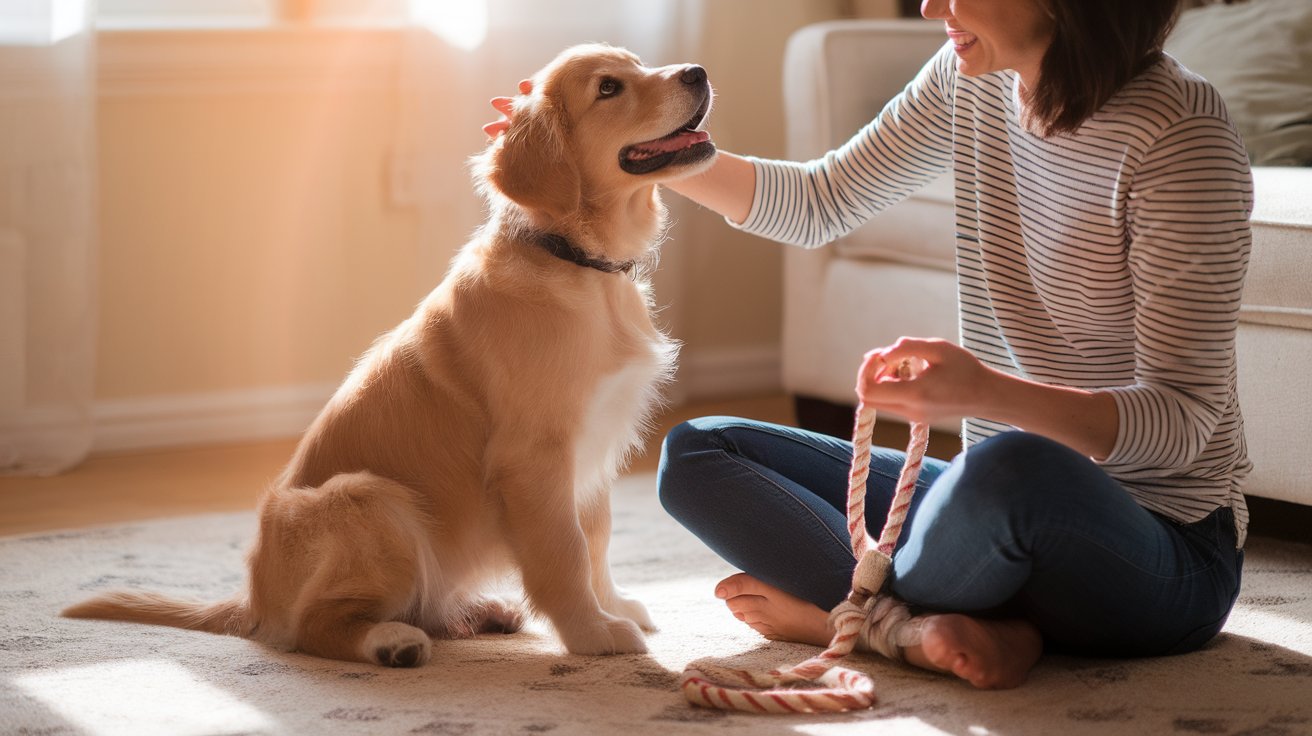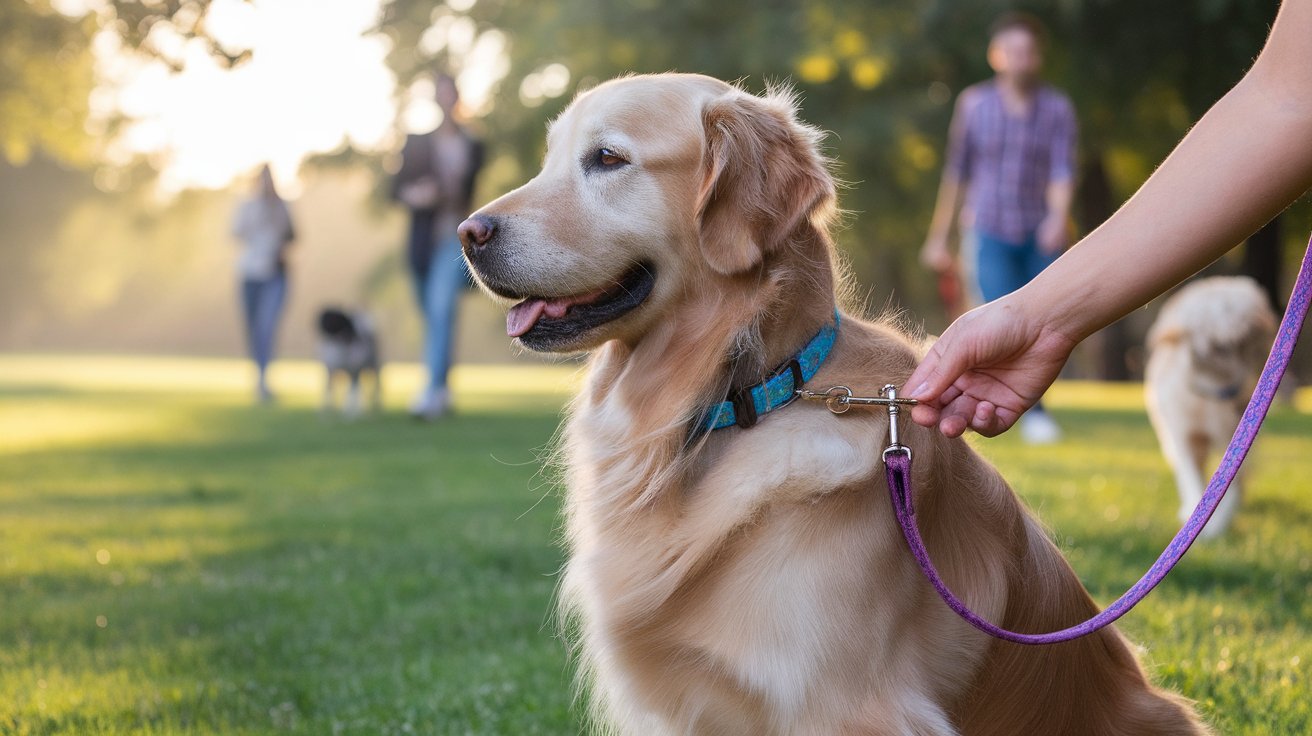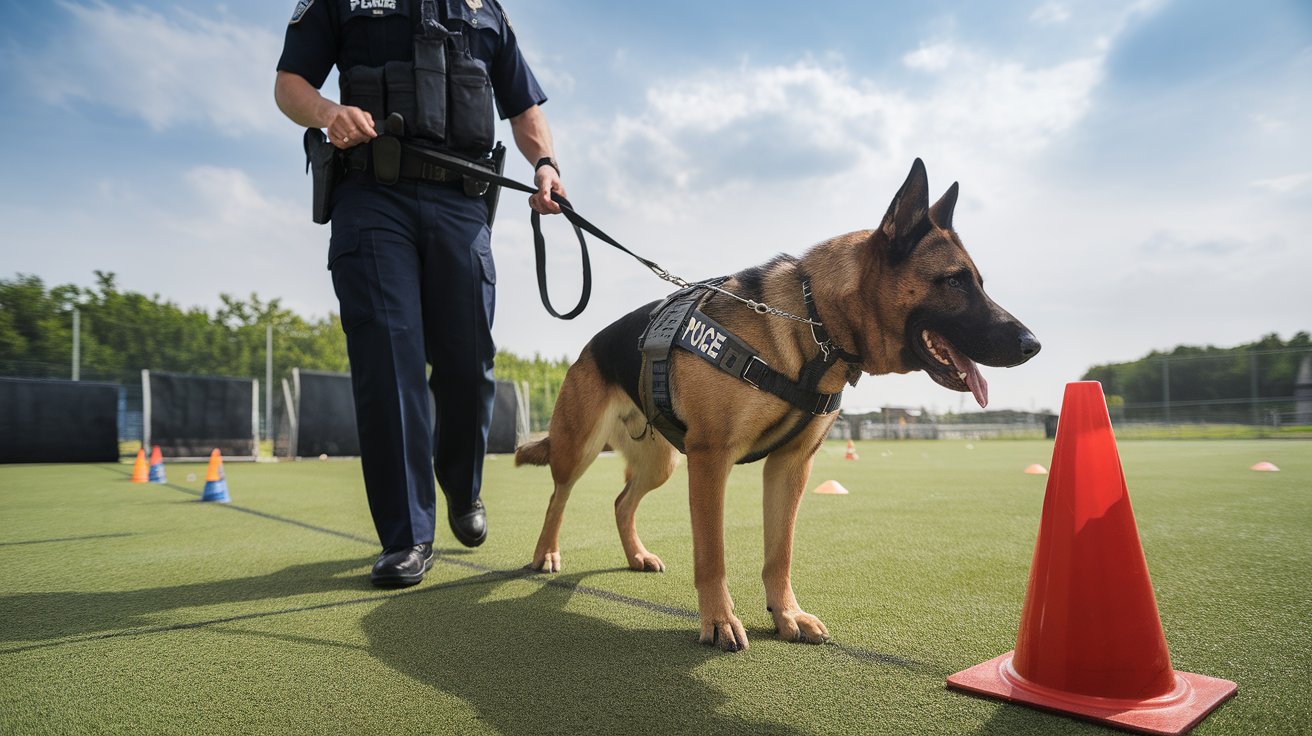Introduction
Regular nail trimming is an important part of dog grooming, ensuring your pet’s comfort and health. Overgrown nails can lead to discomfort, mobility issues, and even infections if they aren’t maintained properly. When you cut dog nails, it’s essential to be cautious of the quick, which is the sensitive part containing blood vessels. Accidentally cutting the quick can cause pain and bleeding, which is why using tools like a nail grinder or dog-safe scissors can make the process safer and more efficient. Getting your dog used to regular nail maintenance is key to preventing long-term health issues.
For many dogs, especially those with black nails, trimming can be intimidating because the quick is harder to see. Owners should trim slowly, making sure to avoid cutting a nail too short. If a mistake happens and the quick is cut, using flour or cornstarch can help stop the bleeding. Regular trimming also prevents stress on your dog’s paw, keeping them active and comfortable.
Key Takeaways
- Regular nail trimming is essential for preventing discomfort, mobility issues, and potential infections in dogs.
- Being cautious of the quick during trimming is crucial to avoid causing pain and bleeding.
- Tools like a nail grinder help trim dark nails gradually, reducing the risk of cutting too close to the quick.
- Applying gentle pressure on pressure points can keep your dog calm and steady during nail trimming.
- Positive reinforcement, such as treats and praise, can encourage cooperation during the trimming process.
- Regular grooming sessions promote comfort and mobility, helping dogs maintain a healthy gait and preventing joint strain.
Understanding Dog Nail Anatomy
Understanding dog nail anatomy is essential for safe and effective trimming. A dog’s nail consists of a hard outer shell that protects the quick, a soft tissue that supplies blood to the nail. If cut too close, the quick can cause significant pain and bleeding. Regular nail trimming helps avoid overgrown nails, which can lead to discomfort and potential injury. It’s important to note that dog nails, especially dark nails, can be tricky to trim since the quick isn’t always visible. Using tools like a nail grinder can help trim gradually, reducing the risk of cutting the nail too short. Nail maintenance is a vital part of dog grooming, ensuring your pup’s paws remain healthy and pain-free.
Key Techniques for Safe Dog Nail Trimming During Grooming
1. Know the Dog Nail Anatomy
Understanding the basic structure of a dog’s nail is crucial for safe grooming. A dog’s nail consists of a hard shell that protects the quick, the inner soft tissue filled with blood vessels. The quick is sensitive, and cutting too close to it can cause significant pain and bleeding. Groomers should trim gradually, especially with dark nails, where the quick is harder to see. Using nail grinders instead of clippers allows for precision and reduces the risk of cutting into the quick. This technique ensures a safer experience and minimizes discomfort for the dog.
2. Use Pressure Points for Stability
Maintaining control over the dog’s leg during nail trimming is vital for preventing sudden movements that may cause mistakes. Groomers often apply gentle pressure on specific points of the leg and paw to keep the dog calm and steady. These pressure points, located higher up the leg, reduce stress and movement, making the process more manageable. Especially for dogs with dark nails, where precision is key, this technique helps ensure more accurate trimming without causing discomfort or injury to the dog.
3. Choose the Right Tools for Trimming
Selecting appropriate tools, such as a nail grinder, is essential for safe trimming. Grinders are often preferred over traditional clippers because they allow for a more gradual, controlled trim, which is particularly helpful for dogs with thicker or darker nails. The slow, careful grinding action reduces the risk of accidentally cutting the quick. Additionally, grinders are less likely to cause jagged edges, ensuring that the nails are smooth and free from snags. Using proper tools tailored to the dog’s specific needs enhances safety and effectiveness in grooming.
4. Understand the Risks of Overgrown Nails
Overgrown nails can lead to discomfort and health issues for the dog, affecting their gait and overall mobility. Groomers should be cautious when handling overgrown nails, as the quick may have extended further than normal. Regular nail trimming helps keep the quick from growing too long, making future grooming sessions safer and less stressful. For severely overgrown nails, trimming in small increments over multiple sessions may be required to safely shorten the nails without risking injury to the dog.
5. Handle Accidental Bleeding Calmly
In cases where the quick is accidentally cut, it’s crucial to remain calm and address the issue immediately. Applying styptic powder or cornstarch to the affected nail can help stop the bleeding quickly. Offering soothing words and gentle touches will help calm the dog during this stressful situation. Groomers should always be prepared with first aid supplies for such accidents, ensuring the dog’s well-being and maintaining a positive grooming experience despite minor mishaps.
6. Reinforce Positive Behavior with Treats
Positive reinforcement plays a significant role in making nail trimming a pleasant experience for the dog. Groomers often reward calm behavior with treats or praise during and after the trimming process. This not only helps the dog associate nail trimming with positive experiences but also makes future grooming sessions smoother and stress-free. Over time, the dog will be more likely to cooperate, making nail maintenance easier for both the dog and the groomer.
Pressure Points for Holding Dog’s Leg Still
When trimming your dog’s nails, knowing how to hold your dog’s leg can make the process easier. Dogs have pressure points located higher up their legs that can help keep them calm and still during grooming. By applying gentle but firm pressure to the top of the paw and the back of the leg, it helps reduce movement and stress. Groomers often use these techniques to ensure stability and avoid causing your dog pain. This is especially useful for dogs with dark nails, where precision is key, as the quick is harder to see. Keeping your dog steady helps prevent mistakes, allowing for more accurate trims with tools like dog nail clippers or grinders.
Common Mistakes to Avoid During Nail Trimming
Dog owners often make a few common mistakes when trimming their pup’s nails. Over-trimming or cutting the nail too short can lead to pain and even bleeding, especially when the quick is accidentally cut. Another mistake is not trimming the nails often enough, allowing them to grow too long, which can cause discomfort when walking. It’s important to regularly inspect and trim nails, as neglect can lead to overgrown nails that extend the nail into a curved shape. Using proper tools like a nail grinder can help prevent accidents, as grinders allow for gradual trimming, reducing the risk of cutting too close to the quick.
Techniques for Handling Resistant Dogs
Handling a dog that resists nail trimming can be a challenge for many owners, but using the right techniques makes the process smoother. It’s essential to understand that each dog has a unique temperament, and what works for one may not work for another. For dogs that resist, it’s important to stay calm, use positive reinforcement, and introduce the process slowly. The goal is to help your dog feel more comfortable and less fearful of the nail trimming routine. Over time, using tools like a nail grinder instead of clippers can make trimming less intimidating, especially for dogs with long nails. Regular dog nail trimming is important to maintain healthy paws and prevent injuries related to overgrown nails.
Case Study: Handling a Resistant Dog During Nail Trimming
In 2019, a professional grooming salon encountered a large dog named Max who strongly resisted nail trimming. Max, a six-year-old Labrador Retriever, displayed severe anxiety during grooming sessions, especially when nail clippers were used. The groomers first tried traditional nail trimming techniques, but Max reacted with fear, growling and pulling away, which posed a challenge to complete the grooming safely.
The salon introduced a different approach using a nail grinder instead of clippers. Additionally, they applied calming techniques such as massaging Max’s paws and using pressure points to keep him steady. To encourage cooperation, positive reinforcement was integrated: treats were offered after each successful nail grind. Over several sessions, Max gradually became more comfortable with the process, and his anxiety decreased. By adapting the grooming techniques to suit Max’s temperament, the groomers successfully managed his resistance, ensuring his nails were trimmed safely and his paws stayed healthy.
Calming Strategies for Anxious Dogs
For dogs that show signs of anxiety or fear during nail trimming, calming strategies can make a significant difference. Start by creating a quiet, stress-free environment, allowing your dog to relax before the trimming begins. Gently massaging your dog’s paw can also help them get used to the sensation of being touched in sensitive areas like the paw pad. In some cases, anxiety medication, prescribed by a veterinarian, may be necessary for dogs with extreme fear. Additionally, tools specifically designed for dogs, like nail grinders, can be less stressful than traditional clippers. Slow and steady progress is key, and if needed, professional grooming services can be a helpful alternative for more anxious pups.
Positive Reinforcement Techniques for Cooperation
Using positive reinforcement is one of the most effective ways to encourage a dog to cooperate during nail trimming. Start by showing the dog the trimming tools, such as clippers or a nail grinder, and offering treats to build a positive association. Gradually work your way up by touching their paw, holding it, and eventually clipping or grinding just one nail at a time. Each time the dog stays calm and allows the trimming, provide immediate praise and a reward. This method helps the dog associate nail trimming with something enjoyable, like treats or affection. Over time, regular dog nail trimming will become a routine your dog is less likely to resist.
Dealing with Specific Issues During Nail Trimming
When it comes to nail trimming, many dog owners face specific challenges, particularly with overgrown nails or accidental bleeding. Regular nail trimming is essential to avoid these issues, but for dogs who haven’t had their nails trimmed regularly, the process requires extra care. Overgrown nails are more prone to splitting, and the quick—the sensitive part of the nail—can extend further into the nail. This makes trimming risky, as cutting too close to the quick can cause pain and bleeding. Having the right tools, such as a trimmer or grinder, and knowing the correct technique can make a world of difference in keeping your dog comfortable and safe during nail maintenance.
Overgrown Nails and How to Trim Them Safely
Trimming overgrown nails can be intimidating, but it’s crucial to avoid future discomfort for your dog. Start by carefully cutting just the tip of the nail, particularly where it starts to curve downward. For dogs with dark nails, it’s harder to spot the quick, so using tools like a nail grinder can help you slowly trim down the nail without cutting too much at once. Regular nail maintenance is important because as nails grow, the quick grows along with them, making it harder to trim nails safely. Scheduling frequent grooming sessions ensures that your dog’s nails stay at a healthy length, reducing the risk of injury or discomfort.
Handling Accidental Bleeding During Nail Trimming
Accidentally cutting into the quick is one of the most common issues dog owners face during nail trimming. If this happens, it’s important to act quickly but calmly. Applying a styptic powder or cornstarch to the bleeding nail will stop the bleeding. Make sure to reassure your dog with soothing words and gentle strokes, as this can help calm them down. Offering treats immediately after helps build positive associations with the process. While minor cuts are usually not a major issue, if the bleeding persists or your dog seems in pain, consult a veterinarian to ensure everything is properly addressed and your dog remains comfortable.
“The better I get to know men, the more I find myself loving dogs.” – Charles de Gaulle
Benefits of Regular Nail Trimming
Regular nail trimming is an essential part of dog grooming, contributing significantly to your dog’s overall health and well-being. Overgrown nails not only cause discomfort but can also lead to serious health issues if left untreated. Long nails can change the way a dog walks, leading to joint strain and postural problems. Furthermore, overgrown nails can snag on surfaces or even grow into the paw pad, causing pain and potential infections. Regular trimming ensures that your dog’s nails stay at a manageable length, preventing these issues and allowing them to move more freely. Using the right nail trimmer or grinder and keeping a close eye on the nail’s quick are key practices for safe and effective grooming.
Prevention of Health Issues from Overgrown Nails
One of the primary benefits of regular nail trimming is preventing health issues that arise from overgrown nails. When a dog’s nails grow too long, they are at risk of developing painful ingrown nails, which can lead to infections and the need for veterinary care. Long nails can also change how a dog places its feet on the ground, leading to joint and posture problems. In small dogs, especially, long nails may cause them to lift their toes awkwardly to avoid discomfort, putting stress on their legs and back. Regular maintenance ensures your dog stays comfortable, active, and free from these common health problems.
Promoting Comfort and Mobility in Dogs
Keeping your dog’s nails trimmed not only prevents health issues but also promotes comfort and mobility. Overgrown nails can alter the way your dog walks, increasing the chances of tripping or slipping, especially on smooth surfaces. When nails are too long, they can push backward on the pad, causing discomfort every time your dog takes a step. By regularly trimming your dog’s nails, you help them maintain their natural gait, reducing the strain on their legs and joints. Proper nail care, using the right tools, like a grinder designed specifically for dogs, allows your pet to walk, run, and play without discomfort, ensuring a happier, healthier life.
Conclusion
In conclusion, regular nail trimming is important for your dog’s overall health and comfort. Ensuring that the nails are trimmed straight across and not too close to the quick can prevent discomfort and potential injuries. Overgrown nails, especially those with a curve of the nail, can cause issues like joint strain or even affect how your dog walks. Tools like a grinder, specifically designed for dogs, can help you safely manage this task by allowing for gradual trimming, especially for dogs with dark nails where the quick is harder to see.
Always be mindful of the skin above the nail and dewclaws, as these areas are particularly sensitive. If your dog has dewclaws, don’t forget to trim them, as they often grow unchecked. By trimming one or two nails at a time, using positive reinforcement, and keeping your dog still for nail trims, you’ll create a stress-free experience. Proper nail maintenance promotes comfort, mobility, and a happier, healthier life for your dog.













